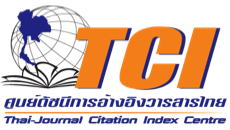The Effectiveness of Breast massage for Stimulating Milk Flow in Mothers After Caesarean Section Uttaradit Hospital
Keywords:
breast massage, milk flow, mother after caesarean sectionAbstract
ABSTRACT
Background: Mothers after caesarean section are the group with problems and obstacles in breastfeeding.
This group of mothers will begin to breastfeed later than mothers who give birth due to their
physical cond Surgical pain causing discomfort stress Such problems affect the flow of milk is not
flowing or slow flowing. As a result, mothers and relatives have anxiety. and make it stop breastfeeding
exclusively. The breast massage will help by stimulatin the mammary glands, promote circulation of
blood and lymphatic system. It can stimulate the oxytocin hormone secretion which cause the let-down
reflex, can help increase breastfeeding
Objective: The level of milk flow Compared with mothers who received massage and did not massage
the breasts of mothers after caesarean section. This is a non-RCT efficacy study in the postpartum
obstetric ward. Uttaradit Hospital in mothers after cesarean section in the obstetrics building after
childbirth Received the service between October 2019 and the month 50 cases, divided into 2 groups
of 25 cases each, starting from receiving the mother after giving birth back from the operating room.
The control mothers were not given breast massage. Self Mamma Control (SMC). Massage at the beginning,
teach, demonstrate, train mothers and relatives, massage every 3 hours for the first 24 hours, and then
follow up with exclusive breastfeeding for 6 months.
Methods: (SMC) is methods that mothers and relatives can easily practice, to massage the nipples and
breasts. The baby can fully keep the nipple in their mount. This will encourage effective breastfeeding,
will active prolactin hormone to continuously increasing milk production and mother’s perception increase
the breastfeeding rate.
Results: The mothers in both groups had an average age. pregnancy history average gestational age}
indication of birth The period of abstaining from water and food and birth weight no different The level
of milk flow in the breast-massage group was significantly faster than the non-massage group (p=0.001).
Conclusion: The role of nurse is important in caring for mothers after cesarean to be successful in
breastfeeding by stimulating breast nipple massage together with the training of skills to enter the
socket correctly It will help mothers reduce stress. resulting in faster milk flow
Keywords: breast massage, milk flow, mother after caesarean section
References
USA: Mc Graw- Hill; 2005.p695-710.
2. สำนักงานสถิติแห่งชาติ. การสำรวจสถานการณ์เด็กและสตรี พ.ศ. 2562. กรุงเทพมหานคร: เท็กซ์ แอนด์ เจอร์นัล พับลิเคชั่น; 2563
3. News medical life sciences. WHO aims to increase global rate of breastfeeding for six months to 50% by 2025.
http://www.news-medial.net.2013.
4. กรมอนามัย. แผนยุทธศาสตร์สุขภาพกระทรวงสาธารณสุขด้านสุขภาพและป้องกันโรค ปีงบประมาณ 2557. 2557 สืบค้น จาก
http://www.anamai.moph.go.th/download/แผนยุทธศาสตร์กรมอนามัย 2557.pdf.
5. Gatti L. Maternal perceptions of insufficient milk supply in breastfeeding. Journal of Nursing Scholarship
2008; 40(4): 355-363. Available from: http://onlinelibrary.wiley.com/doi/10.1111/j.
6. Chien LY, Tai CH. Effect of delivery method and timing of breastfeeding intiation on breastfeeding outcome
in Taiwan .Birth 2007; 34(2):123-130.
7. Karlstrom A, Engstrom OS, Norbergh K, Sjoling A, & Hildingsson. Postoperative pain after cesarean birth
affect breastfeeding and infant care. Journal of Obstetric, Gynecology and Neonatal Nursing 2007; 36:430-440.
8. Evans KC, Evans RG, Royal R, Esterman AJ, & Jame SL. Effect of caesarean section on breast milk transfer to
the normal term newborn over the first week of life. Archives of Disease in Childhood Fetal and Neonatal
Edition 2002; 88 : 380-382.
9. Lawrence RA, &Lawrence RM. Breastfeeding a guide for the medical profession 7th ed St. Louis: Mosby
Elsevier; 2011.
10. Pingwong K, & Kantaruksa K. Breast Massage for Promoting Milk Production and Milk Ejection. Nursing Journal
2017;44(4);169-176.
11. Foda M.I. &Oku T. Change in milk protein of lactation mothers following breast massage. International
Journal of Dairy Science 2008;3(2):86-92.
12. เปล่งฉวี สกนธรัตน์ และ ศศิธร ภักดีโชติ. เปรียบเทียบผลการใช้ลูกประคบสมุนไพรกับการใช้ผ้าชุบนํ้าอุ่นเพื่อกระตุ้นการ
หลั่งนํ้านมของมารดาหลังคลอดโรงพยาบาลสกลนคร. วารสารโรงพยาบาลสกลนคร 2555 ;15(3):1-11.
13. Jones E, Spenecr SA. Optimising the provision of human milk for preterm infants. Archives of Disease in
Childhook- Fetal and Neonatal Edition 2007; 92(4): 236-238.
14. Murry SS, Mckinney ES, Foundations of maternal-newborn and woman’s health nusing 6th ed.St. Louis:
Mosby Elsevier:2014.
15. Kent JC, Prime DK, &Garbin CP. Principles for maintaining or increasing breast milk production. Journal of
Obstetric, Gynaecologic & Neonatal Nursing 2012; 41(1):114-121.
16. Walker M. Breastfeeding management for the clinician: Using the evidence 3rd ed. Burlington 2014.
Downloads
Published
How to Cite
Issue
Section
License

This work is licensed under a Creative Commons Attribution-NonCommercial-NoDerivatives 4.0 International License.
The names and email addresses entered in this journal site will be used exclusively for the stated purposes of this journal and will not be made available for any other purpose or to any other party.











